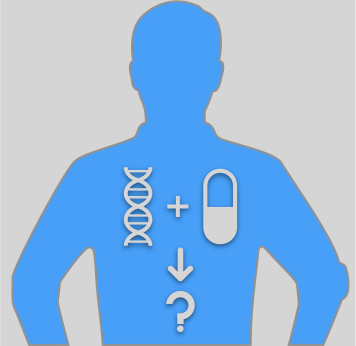Adverse drug reactions (ADRs) caused by genomic variations through modulation of Pharmacokinetics and Pharmacodynamics of a Drug

How does genetic make-up determine the possibility of developing ADRs to medications?
The human genome, on average, is 99.9 percent identical between two individuals. The 0.1 percent variations determine the differences between individuals like thread color, height, increased risk of addiction, or specific comorbidities. These personal or semi-personal (family shared) variations often affect how an individual or family responds to a particular drug. Such variable drug responses broadly arise from two fundamental processes that occur upon medication intake: what the drug does to a body (pharmacodynamics) and what the body does to the drug (pharmacokinetics). The study of the genetic differences in response to medicines is called pharmacogenetics.
ADRs, genomic variations, and pharmacokinetics
Metabolism is one of the principal pharmacokinetic processes before the body eliminates a medication. Genetic variations between individuals may be responsible for metabolizing medicines at different rates. For instance, the genetic background makes specific individuals ultra-rapid metabolizers, while it causes other individuals to be poor metabolizers. As a result, a drug may have different medication levels in the body for a different duration. Patients that are ultra-rapid metabolizers might not receive the full effect of the medication. Consequently, the body metabolizes the drug too fast, resulting in minimal absorption and limited time to exert a desired pharmacological action. Conversely, if the body metabolizes medication slowly, the patient has prolonged exposure to the drug and can give rise to adverse drug reactions.
For example, Isoniazid, an anti-tuberculosis medication, is metabolized by the enzyme N-acetyltransferase. About half of the population in the United States are slow acetylators. As a result, it takes longer for these individuals to metabolize Isoniazid by N-acetyltransferases (NAT2). Consequently, Isoniazid reaches higher blood levels compared to normal metabolizers and remains in the body longer. Higher blood levels and prolonged exposure to Isoniazid make the patients more prone to its side effects like vision changes, nausea, vomiting, and fatigue. Based on the evidence of the association between genetic variation in NAT2 and Isoniazid, genotyping for acetylation is often suggested by physicians before starting Isoniazid therapy. With the help of genotyping results, physicians prescribe the dose to maximize intended pharmacological action with reduced chances of developing adverse reactions.
ADRs, genomic variations, and pharmacodynamics of a medication
One typical example of genetic background modulating adverse drug reactions through the pharmacodynamic process is Warfarin. Warfarin is an inhibitor of epoxide reductase (encoded by VKORC1 gene) responsible for altering sensitivity to activating vitamin K and other coagulation factors. Patients with specific variations in the VKORC1 gene have an altered sensitivity to Warfarin. Without proper dosing of Warfarin, patients have an increased chance of developing blood clots.
Evidence of altered drug response as a function of genetics is emerging. The Food and Drug Administration maintains a list of currently suggested drugs that may have modified responses based on the patient's genetic background.
Conclusion:
Pharmacogenetic testing and individualized medicine widen the window of therapy for better treatment approaches with minimum adverse reactions. It enables physicians to assess if the patient has genomic variations that may result in altered sensitivity before receiving medication. For safety and efficacy, health care teams should carefully evaluate evidence of drug-gene association and utilize testing before giving high-risk medications.
- Ahmed, Shabbir et al. "Pharmacogenomics of Drug Metabolizing Enzymes and Transporters: Relevance to Precision Medicine." Genomics, proteomics & bioinformatics vol. 14,5 (2016): 298-313. [Article]
- Doogue, Matthew P, and Thomas M Polasek. "The ABCD of clinical pharmacokinetics." Therapeutic advances in drug safety vol. 4,1 (2013): 5-7. doi:10.1177/2042098612469335 [Article]
- Kinzig-Schippers, Martina et al. "Should we use N-acetyltransferase type 2 genotyping to personalize isoniazid doses?." Antimicrobial agents and chemotherapy vol. 49,5 (2005): 1733-8. doi:10.1128/AAC.49.5.1733-1738.2005 [Article]
- Rollinson, Victoria et al. "Pharmacogenomics for Primary Care: An Overview." Genes vol. 11,11 1337. 12 Nov. 2020, doi:10.3390/genes11111337 [Article]
- Table of pharmacogenetics association maintained by FDA. [Article]